Back In The Game
Story by Jimmy Lewis & Trevor Hunter, Photos by Drew Ruiz
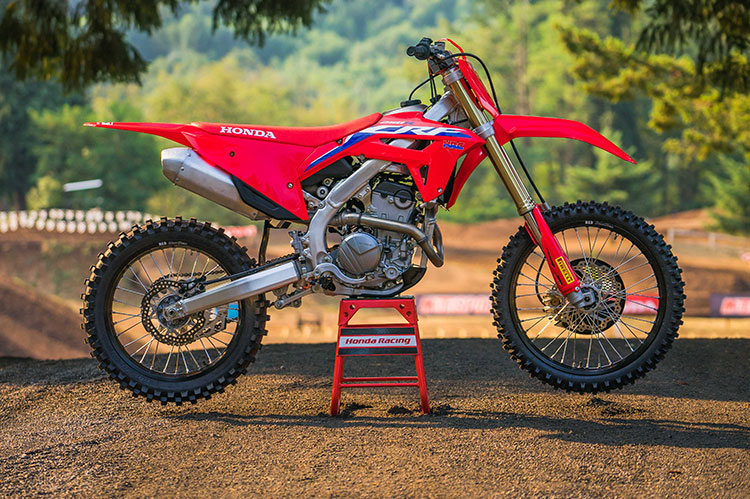
Big Red finally pulled the curtains on the much anticipated 2022 CRF250R and DBT was on hand to ride it at the scenic Mountain View MX Park in Sandy, Oregon. The 250F sees most of the same changes that the CRF450R received for 2021 with an updated chassis, suspension settings, and engine refinements. To see the full breakdown of the changes, click HERE.
Want a visual/audio version of this breakdown? Check out our First Impression video below!
The big elephant in the room is, “Is the 2022 CRF250R faster than the previous generation?” The simple answer is yes. The older bike had a very top end heavy power delivery with a very lackluster bottom-mid power and torque. Oddly the 250RX off-road race bike-with the same engine– was much better in that lower rev range, but then it lacked some top end that the R motocross bike had. In riding the new bike, the biggest takeaway for 2022 is Honda boosted that bottom-mid power to more resemble the RX character–even a bit more–while keeping the same top end of the older CRF for a more powerful engine.
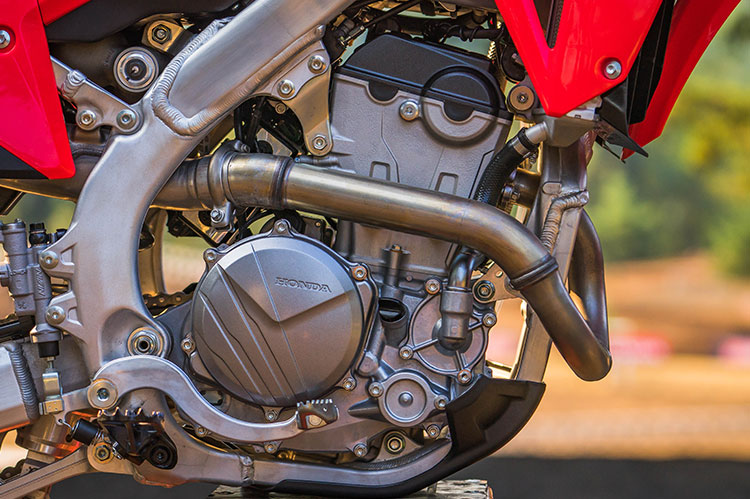
The ‘21 Honda felt like a 125 with the rev limiter being your friend, a fun yet challenging bike to ride — a character favoring more advanced riders. Now, the bike still retains that 125-style fun factor that comes with revving a bike out but it is built with a better base for those who aren’t always floating the valves. The new motor is much more forgiving than the old one if you are a gear high or like to let the bike drop in revs. Much more similar to the competition than it has been in a while.
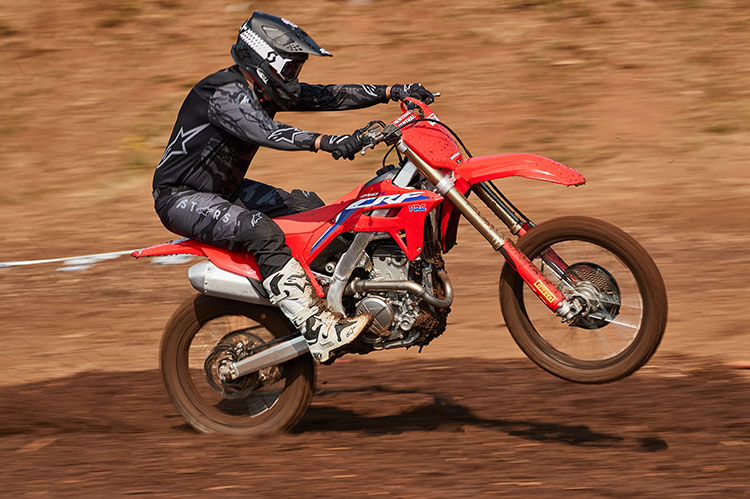
The transmission ratios have also been altered. Combined with the added power, there are now two usable gears without covering the clutch in most scenarios when there was previously only one. First gear, while really not needed on most tracks, is tall enough that it can be used and second and third gears are tight enough to be interchangeable out on the track. The cable clutch works just fine and we didn’t feel a need for a hydraulic clutch like the CRF450 has. We experienced no clutch fade but also used the clutch much less overall. Though our heavier rider (200 lb.) thought a one-tooth bigger sprocket might help on the Mountain View tracks uphill jumps, it would have been a track specific change. (MXA had the sprocket in their kit but it would have required a longer chain to be installed, FYI)

In the suspension department, we didn’t get the best test due to us being on a fully prepped and unfamiliar to us track with only 6-7 bikes on it over the course of two days, but by the end it got rough enough to get a decent feel for it. Like the older bike, the suspension and handling is still one of the highlights of the bike despite differing setups for our two different riders. The coil-spring Showa components gain some of that KYB-like initial stroke comfort that they have lacked in the past but still retain the typical Showa bottoming resistance.
Our younger and lighter weight tester kept the changes fairly minimal with our first order of business increasing the sag a little. Honda recommended 105mm of sag but we were struggling with stability and felt we had room to give up in the corners to achieve that stability. We took out ½-turn of preload and it helped settle the bike down coming into corners and actually helped our cornering as we were able to come in straighter and in control. I find myself liking 2-3mm of more sag over what is recommended on almost every bike I ride. I backed it up with stiffening the high speed compression on the shock 1/6 turn. It gave the rear end a little more control and just firmed it up enough when hitting the weird holes and pockets that formed in the sand-like wood chips.

Jimmy Lewis is hovering at the 200-lb mark and prefered all standard suspension settings with the proper amount of sag (105mm) dialed in. He tried slightly stiffer compression settings and found the bike would have better hold-up but would suffer a little on comfort. The handling character didn’t change much and the bike isn’t so picky about these changes, meaning the base is a very good starting point, very similar to the 450 last year. The biggest difference in suspension is that the base setting is stiffer (especially in the front) which will make the faster riders (most journalist’s test riders included) happier so the public perception won’t be swayed so quickly.
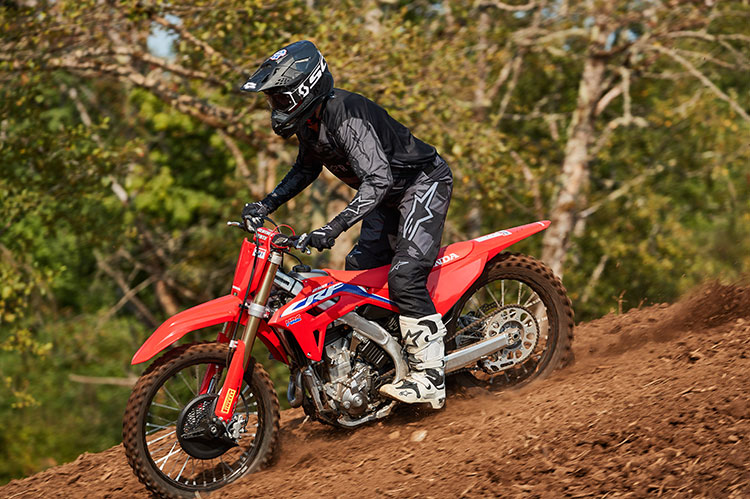
In the handling department, it’s a noticeable change in direction from the old chassis. The old CRF was one of, if not the most stable bikes in the class. While it still cornered well, its standout feature was stability and the chassis shined on faster tracks like a Glen Helen or Cahuila style circuit. The new bike, which seems to be a trend across the board among some of the OEMs, is sacrificing some of that stability to increase precision and cornering performance. Some of that added precision comes in the fact that the bike is claimed to be 8lbs lighter than the previous generation. It is significantly thinner from front to back, topping out at 70mm thinner on the rear end with the loss of a muffler on one side.
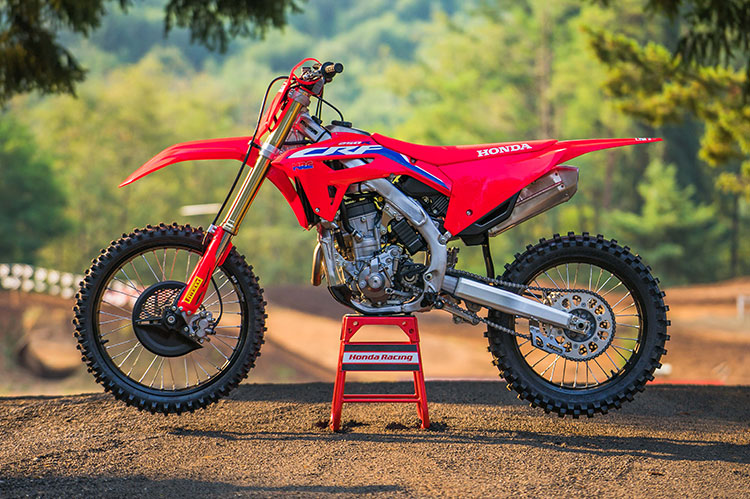
You can feel the lighter weight and the bike falls into turns more easily than in the past. It is more precise or more reactive to rider input in the turn from what we felt on the mostly hardpack track. On the higher speed straights, when chop developed the front end could dance a bit but it didn’t seem to upset either of our riders and dropping the rear a little helped out a lot. We found the bike easy to slide around on and finding a comfort level in the ergonomics is never an issue on a Honda, typically for anyone. We’re pretty sure the Pirelli tires are an improvement but it will take a more familiar track and more riders to formulate a final opinion.
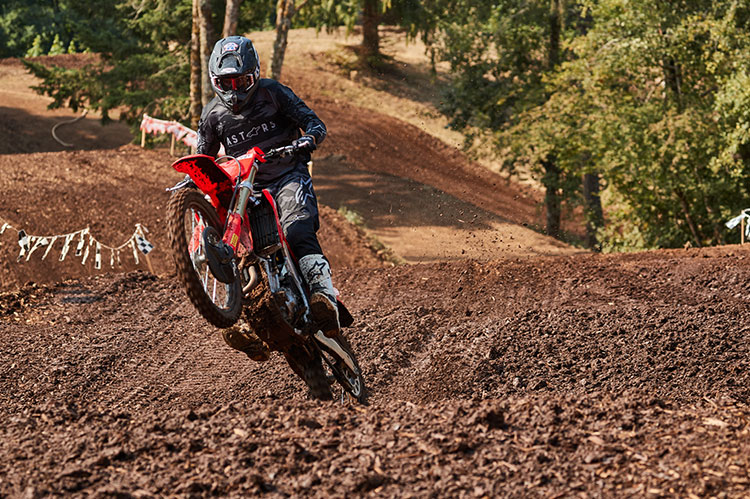
One of the only issues we had was somehow our right foot was denting the can of the muffler from knocking it when the rider’s foot comes off the peg and goes back when jumping. We put a significant amount of riding on the bike in each single day and even though the clean-air side of the filter is increased, the actual size of the filter element is smaller and more frequent filter changes should be expected. Luckily it is a clip-in design and only takes one bolt to remove the side panel.
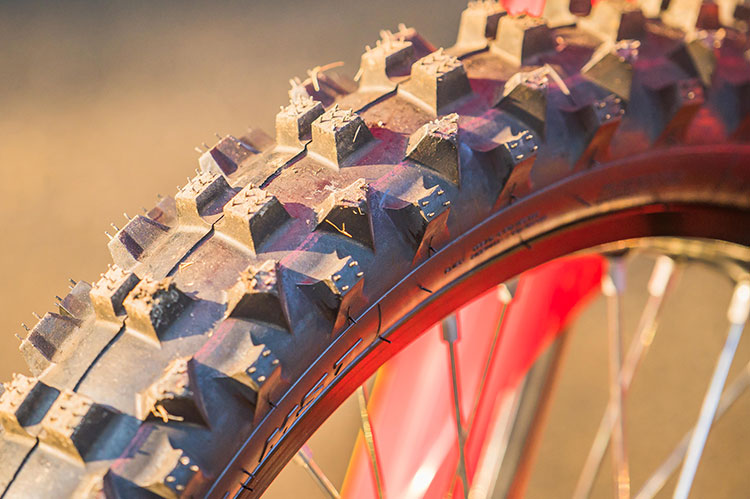
In conclusion, the 2022 Honda CRF250R is a better motorcycle for way more riders than the ‘21 edition, specifically in the engine. There are big gains in the bottom-mid and added torque without losing any top-end. With the “fill-in” of power, the engine character might not feel as “exciting” since there isn’t a large jump in power to get there. But you’ll get there easier, faster and roost a few more turns or clear more jumps along the way The suspension is improved in stock trim and covers its bases for a wide variety of riders. With more precise handling comes a light and more agile feeling that may be the only real point riders will develop conflicting opinions on. More time on the bike at other tracks and comparisons to other bikes in the class will answer all the questions with time but for the most part Honda achieved all the goals they set out to achieve.

